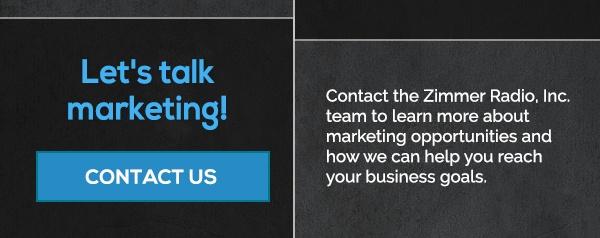 As a small business owner, there’s a lot to juggle and even more hats to wear. You know that a website is an important investment for your business, but that doesn’t mean you know what you need to design one. To maximize your advertising dollars and website efficacy, you need to start by knowing what makes a good website. In today’s post, we’ll discuss the elements your website needs to be successful.
As a small business owner, there’s a lot to juggle and even more hats to wear. You know that a website is an important investment for your business, but that doesn’t mean you know what you need to design one. To maximize your advertising dollars and website efficacy, you need to start by knowing what makes a good website. In today’s post, we’ll discuss the elements your website needs to be successful.
Visual Appeal
Your website is like your storefront — visitors are going to judge you for its design and content. In fact, 75% of users will make judgments about how trustworthy your business is based on design, but you’ll only get half a second to make the right impression. That’s why it needs to be up to date, modern, and attractive. It also needs to reflect your business offerings and branding.
Tips:
- Keep it simple enough to be easy to consume, but complex enough to be interesting.
- Make judicious use of white space. It improves clarity and will help text, graphics, and colors stand out.
- You should also be judicious and strategic with colors. You need to align the color with your branding, but pops of color can also help guide a visitor’s attention around the page.
- Images, in general, are useful, and photographs specifically can make a big impact. Be sure to pick images that match your market. (For instance, crowds of smiling people would be inappropriate for a funeral home.)
- Don’t go crazy with fonts. Some headers can be in special fonts like a type of script, but body text ought to be easy to read. Helvetica is a design standard.
- Don’t change up your web design theme between one page and another. Your site should feel cohesive and consistent.
- Design for your audience. Boomers probably don’t have the same aesthetic as Millennials, after all.
User Friendliness
Believe it or not, half of potential sales are lost because website visitors can’t find the information they’re looking for, and of those, 40% will never return after having such a bad experience. Worse, sometimes that information is as basic as how to contact the company — 51% of people think thorough content information is the most important element missing from many business sites, and 44% will leave a business site if there’s no contact information, especially phone number. And more than half of website visitors will use the navigation menu to orient themselves. That means that being user-friendly will pay off.
Tips:
- Try to structure your site in such a way that users can find what they want in roughly three clicks, no matter what page they start with.
- A significant number of people will want to be able to click your business logo to navigate to your home page.
- Be sure to offer a navigation menu, but make it clean, simple, and straightforward. Too much text will make the menu clunky and overwhelming.
- If you feature a blog or product and service pages, a search menu will help expedite customer efforts to find what they want.
Content Relevance
There’s a number of reasons customers will come to your site: finding contact information, learning about your brand’s products and services, understanding company values, and even making purchases or finding out where they can find your products. Knowing what your customers need means you can feature that information in a way that will engage them.
Tips:
- Regularly review your contact information and links for social media or social review sites (e.g., Yelp). Whenever something changes, proactively apply that to your site immediately.
- Don’t be afraid to take a peek at what your competition is doing on their blog. You can learn a lot about what works, as well as what doesn’t.
- Similarly, look to the thought leaders and influencers in your field. They’re sure to be touching on relevant topics. You can also look into featuring guest bloggers.
- Don’t rely on just your interests in topics. Rather, ask your customers what they’d like to see. This will help you meet their needs and interests.
- Video and infographics can have a big impact on your audience. They’re both interesting to look at and easy to consume.
Optimization
Organic search is important because, aside from the market research you need to do to identify relevant keywords, it doesn’t cost you money. What’s more, it represents 60% of your site’s traffic. SEO is what lifts your rankings in organic search, and it can include everything from keywords to the length and relevance of your content. The easiest way to improve your SEO is to have it built into your site to begin with.
Tips:
- Familiarize yourself with Google’s ranking signals and restrictions. As the leader in search, this is an easy way to stay in the know on best practices. Expand your familiarization to other engines over time.
- Don’t try to cheat the system. It may sound like it’s cheaper, but major search engines like Google and Bing aren’t fooled for very long. They will penalize your site and it will cost you more in the long run.
- Knowing which keywords to use can be difficult. Long-tail keywords tend to be more effective because they offer more specificity, helping users more effectively narrow in on what they want.
- Consider hiring an SEO or content professional. These experts will be up to date on best practices and help you build a successful strategy.
Regular Updates
As an outgrowth of our last point, you should remember that quality posts put up with relative frequency are a ranking factor for most search engines. But that’s not the only reason to maintain fresh content online. Especially if you include a blog or news updates, they can enhance your omnichannel efforts because it can be cross-posted and shared; plus, new content means the addition of keywords. Most importantly, B2C companies that blogged 11 or more times per month saw four times as many leads as those that blogged about five times per month.
Tips:
- Ensure that no matter what kind of content you’re adding or updating, it adds value to the user experience.
- Product and service pages should also be kept up to date. These are some of the most important sections customers will look at, and outdated information could hurt conversions.
- Make your business a thought leader in your industry by posting on a consistent schedule. When people can count on good content, they’ll come looking for it.
- Consider including guest bloggers. This can expand your network of influence while enhancing your authority.
Responsiveness
Being device responsive is critical. Many visitors (40%) will abandon a website that takes three seconds or longer to load, and each second it takes to load could mean a 7% loss in conversions. More than 75% of US internet users access the internet via mobile, and 48% of them say if they arrive on a business site that doesn’t work well on mobile, they assume the business simply doesn’t care. Because of all this, search engines have made mobile-friendliness a ranking signal; not being responsive could cause major damage to organic search and much more.
Tips:
- Start by checking Google’s mobile-friendly test. Optimization is done on a page by page basis, and the results will help you identify where your responsiveness is weak.
- Make sure your images are compressed to an appropriate file size to load quickly.
- Avoid using Flash. It’s outmoded, and doesn’t function on most mobile devices.
- Remember that your layout needs to be “thumb-friendly.” People will be navigating with their fingers, not a mouse, so they need points they can drag to scroll, URL text that’s large enough to click, etc..
- Most web design services provide responsive designs. Take advantage of their preview on mobile options.
Remember, the factors we’ve listed above are just a starting place to ensure you get the most out of your website. Your advertising dollars and website design are both important investments for your business. Understanding what makes a good website will help you avoid wasting time and money when you build a new site for your business.

